About our most secure, flexible plan purpose-built for large teams and organizations
Get Started Now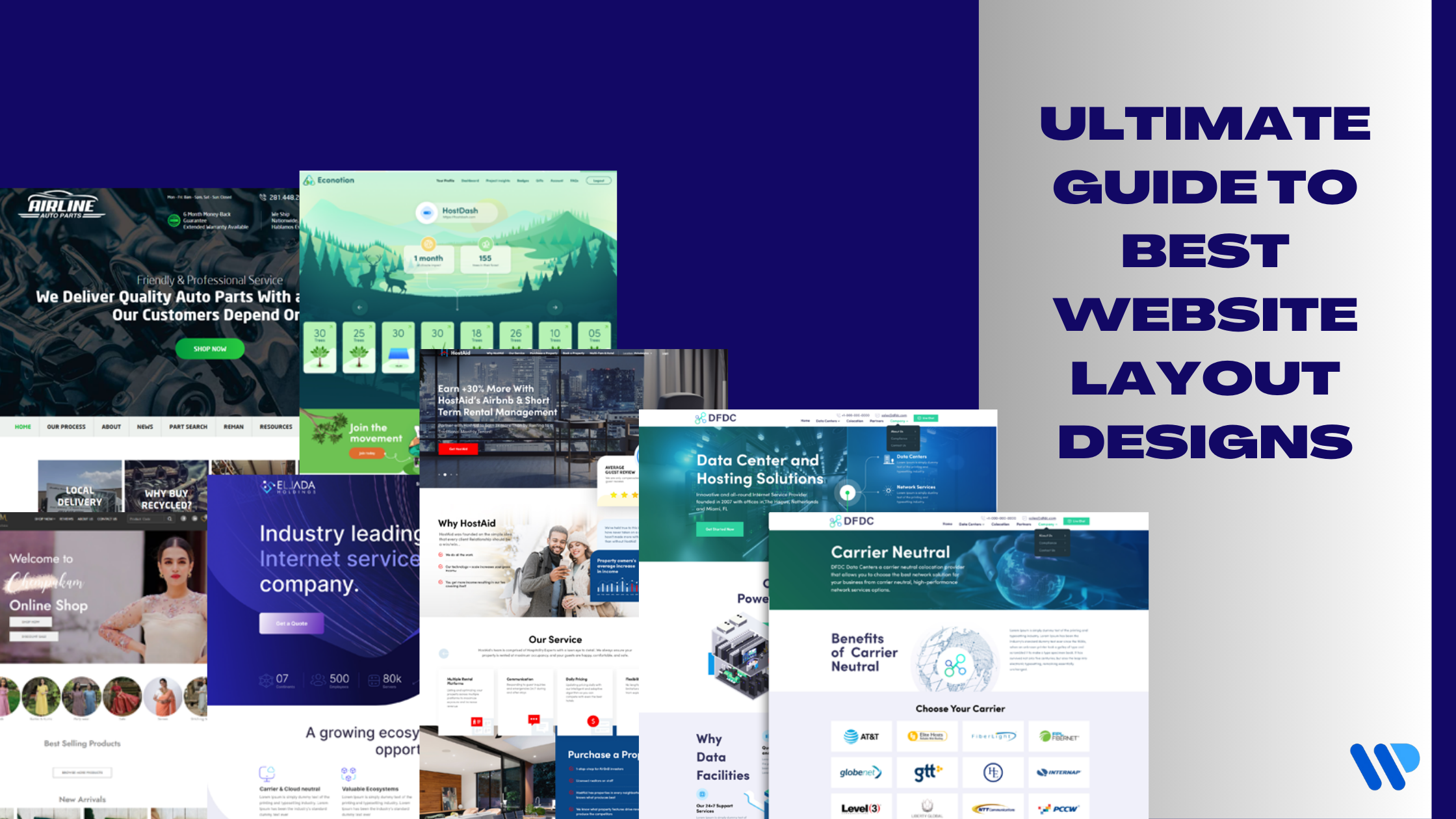
Ever wondered what makes a website layout so mesmerizing? Web design is evolving faster than your favorite TV series plot twists! Every day, people eagerly search for new webpage designs, keeping up with trends and updates. Why? Because a great layout isn’t just about looks-it’s about how effortlessly it guides you to what you need.
Think about it: when was the last time you clicked away from a poorly designed website? Probably too many times to count. The design can make or break a user’s experience, whether it’s clean and modern or a total eyesore.
Let’s see what’s the secret sauce behind creating outstanding layouts. Plus, you’ll see detailed examples that could inspire your next masterpiece. Keep scrolling-we’re just getting started!
Choosing a website layout might seem tricky at first, but it doesn’t have to be! Let’s break down the most popular ones, so you can find what works for your site. From eye-catching designs to layouts that scream functionality, here’s a closer look:
The right layout not only enhances your website’s appeal but also improves navigation and user experience. It ensures that visitors can quickly find what they’re looking for without frustration. Whether you’re showcasing a portfolio, selling products, or running a blog, there’s a perfect layout for every need. Let’s explore the options!
The Z-pattern in web design is a visual layout pattern that guides the viewer’s eye along a specific path on a webpage. It’s based on how people typically scan content, especially on simpler pages with minimal text. Here’s how it works:
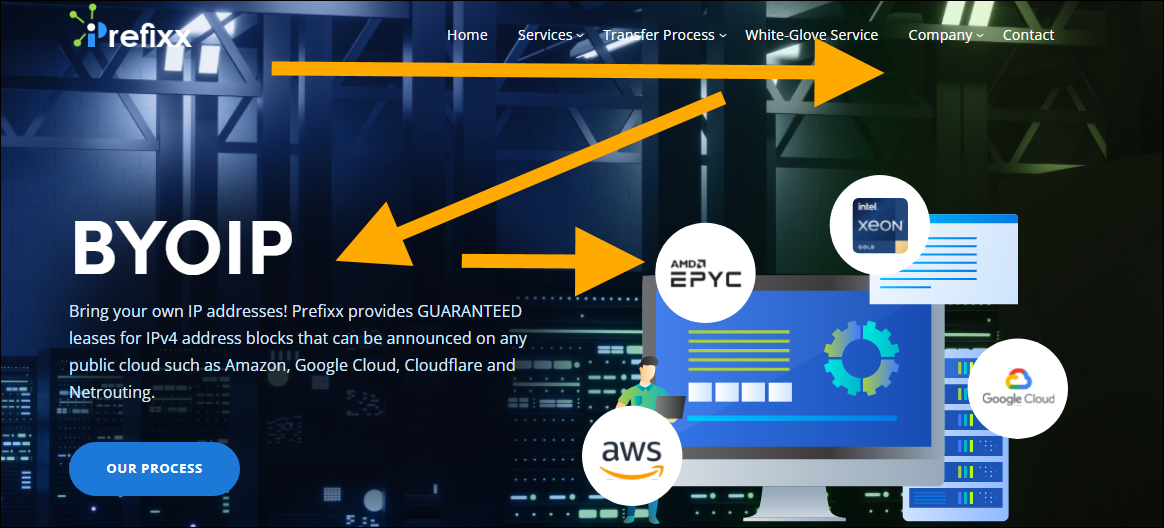
The Z-pattern works best for simple, minimalistic designs, like:
It’s an excellent choice for guiding users through a natural flow without overwhelming them with content.
The F-pattern layout is designed to align with how people naturally scan text-heavy pages. It’s based on the way users read: focusing on the top of the page, skimming horizontally, and then moving vertically down the left side. This layout is perfect for content-rich websites where reading is the main activity. Here’s how it works:
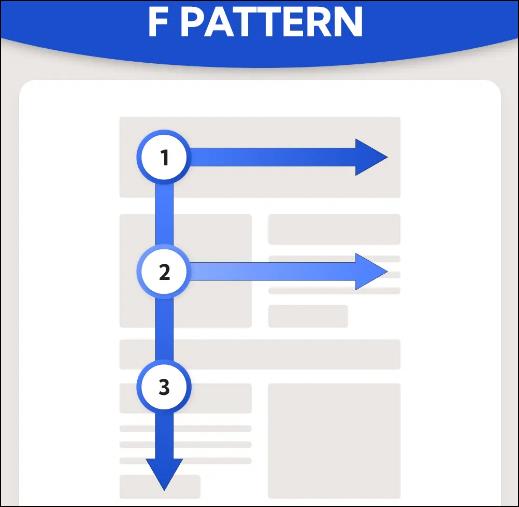
The F-pattern layout is ideal for websites that prioritize text and need users to scan information quickly. Here’s where it excels:
This layout is perfect for ensuring your content is easily digestible and helps users quickly locate what they’re looking for, making it a go-to for websites with a lot of reading material.
The magazine layout is all about showcasing diverse content in an organized yet visually engaging way. This layout mirrors the design of a traditional magazine, featuring large images, bold headlines, and well-structured sections. It’s perfect for websites that want to create a visually dynamic, professional appearance without overwhelming the viewer. Here’s how it works:
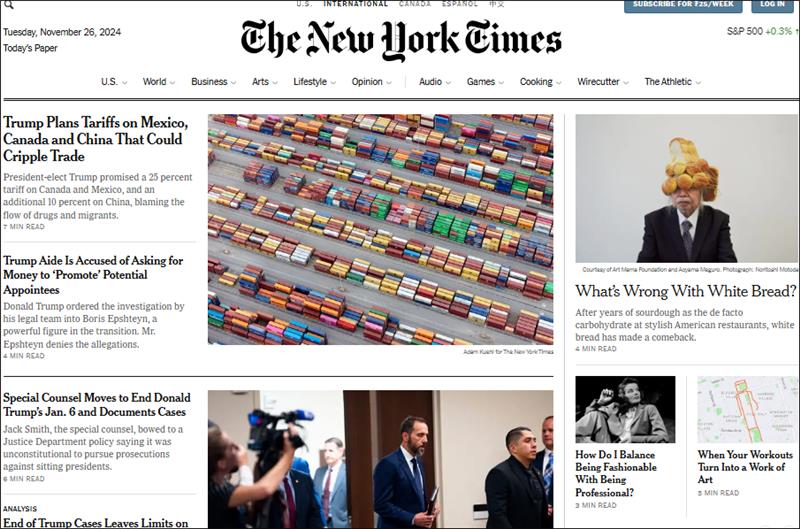
The magazine layout is perfect for content-heavy websites that need to look polished and organized. Here’s where it works best:
This layout is great for offering a visually rich experience, making it a popular choice for content-driven websites that need both organization and style.
The grid layout is all about structure and balance. It divides the page into uniform columns and rows, creating a clean, orderly look. This layout is perfect for sites that need to display lots of content in a way that feels visually harmonious. The key here is symmetry-everything has its place, and it’s easy for users to navigate through. Here’s how it works:

The grid layout shines when content needs to be displayed clearly and efficiently without overwhelming the viewer. Here’s where it’s most effective:
This layout is ideal for sites with a large amount of content that still need to maintain a polished and organized look. Whether you’re selling products or displaying artwork, the grid layout keeps everything in place, creating a visually pleasing and functional user experience.
The modular layout is similar to the grid layout but with more flexibility. It divides the page into distinct, independent content blocks, or “modules,” that can be arranged in various ways. Each module can hold different types of content-text, images, videos, or interactive elements-allowing for greater customization. Here’s how it works:
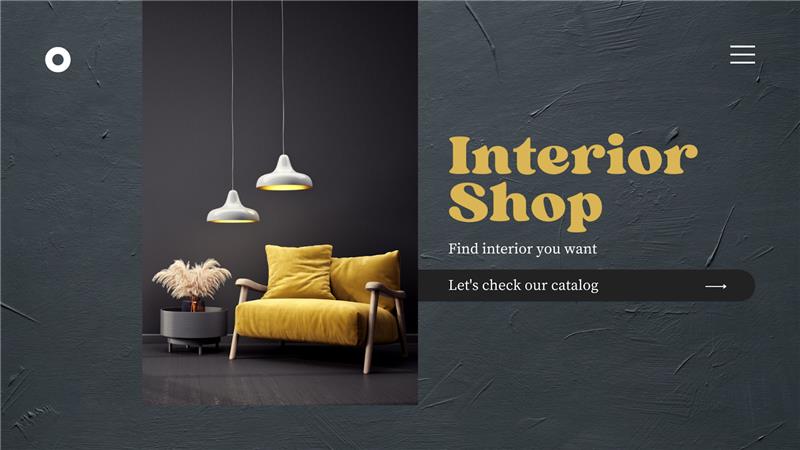
The modular layout is ideal for dynamic websites that require flexibility and adaptability. Here’s where it works best:
This layout is perfect for websites that need to be flexible and modular, giving you the freedom to add, update, or change content on the fly without disrupting the entire design. It’s perfect for sites that are constantly evolving or that require a clean, organized structure.
The single-column layout is the ultimate minimalist design. It organizes all your content into one vertical column, simplifying the user experience by focusing on one piece of information at a time. This layout eliminates distractions, making it perfect for websites that want to keep things straightforward and clean. Here’s how it works:
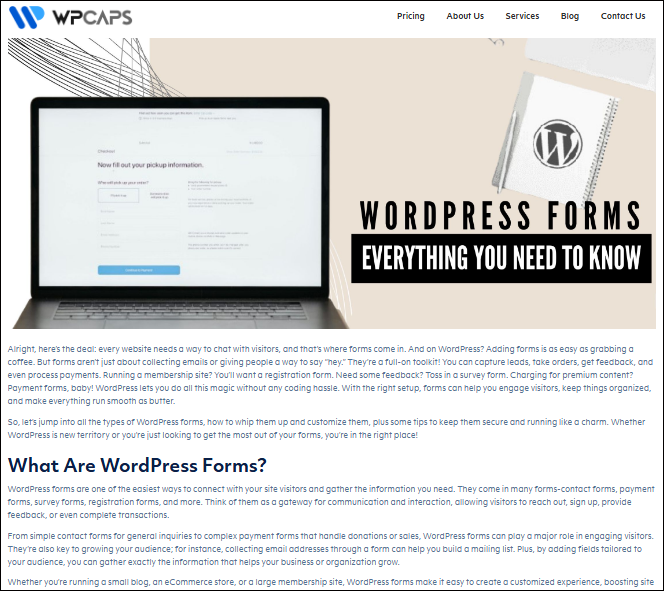
The single-column layout works best for sites that prioritize simplicity and easy readability. Here’s where it excels:
This layout is perfect when you want to keep things clean and easy to navigate. It’s great for content-driven sites that need to provide a seamless, distraction-free experience for users, especially on mobile devices.
The content-focused layout is all about putting your content front and center. This layout is designed to ensure that the user’s attention is solely on the material you want them to engage with, whether it’s text, images, or videos. It strips away unnecessary distractions and places emphasis on the content itself. Here’s how it works:

The content-focused layout works wonders for websites where content is the star. Here’s where it’s most effective:
This layout is all about making sure the user’s attention is on your message. It’s perfect for content-driven websites that need to provide an uninterrupted and engaging reading or viewing experience.
The full-screen layout is a bold, immersive design that takes advantage of the entire screen space. It’s perfect for creating a visually striking experience where the content (usually images or videos) fills up the entire screen. This layout grabs the user’s attention right away and keeps it focused on the message you want to deliver. Here’s how it works:
The full-screen layout is perfect for websites that want to make an instant visual impact. Here’s when it shines:
This layout is all about going big and bold. It’s perfect for anyone who wants to make a powerful visual statement and immerse users in their content right from the start.
The hero layout is designed to immediately capture attention with a large, eye-catching element (usually an image, video, or graphic) placed at the top of the page. This “hero section” serves as the focal point of the page, with supporting content following below. It’s all about creating a strong first impression and encouraging users to take action. Here’s how it works:
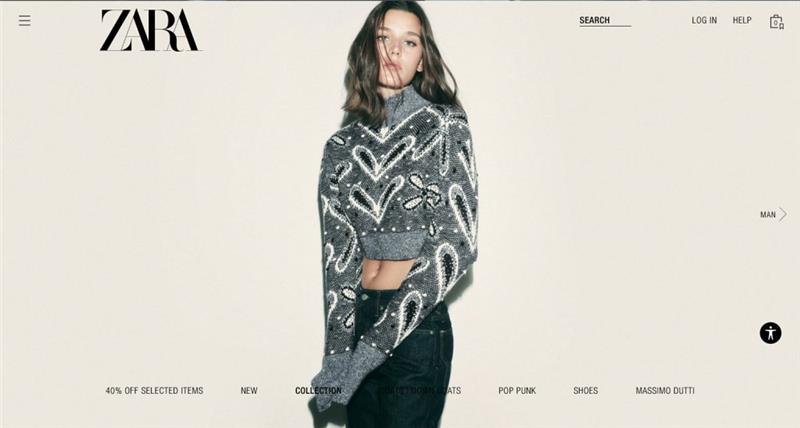
The hero layout works great when you want to highlight a key message or action right off the bat. Here’s when it’s most effective:
This layout is all about grabbing attention instantly with a powerful visual and compelling message. It’s perfect for creating an unforgettable first impression that keeps users engaged.
The split-screen layout divides the webpage into two distinct sections, usually with a vertical line down the center. Each side can feature different content, such as text, images, or videos, offering a dynamic, balanced design. This layout is great for websites that want to present two equally important pieces of content at the same time, allowing users to make a choice or compare information quickly. Here’s how it works:

The split-screen layout is ideal for websites that need to present two sides of a story or two major actions at once. Here’s when it’s most effective:
This layout is perfect when you want to emphasize two important elements equally, helping users make decisions quickly and easily. It offers a balanced, engaging experience that’s both functional and visually appealing.
The asymmetrical layout breaks away from the traditional grid and embraces a more dynamic, unconventional design. As the name suggests, the elements are not symmetrically balanced, creating an intriguing, off-kilter look that draws attention. This layout is perfect for websites that want to stand out and create a unique, artistic vibe. Here’s how it works:

The asymmetrical layout is ideal for websites that want to break free from traditional design conventions and make a bold statement. Here’s when it works best:
This layout is all about making a statement and creating a memorable experience. It’s perfect for creative professionals and brands looking to stand out and express their unique identity through their website design.
Choosing the right website layout can feel like a puzzle, but don’t worry-it’s easier than it sounds! A solid layout helps organize everything on your page, making it look neat and inviting. It ensures visitors know exactly where to go, which makes their experience smoother and more enjoyable.
The key here is figuring out what your website needs. Are you showing off a portfolio, running an online store, or sharing helpful info? Your layout should reflect the vibe and goals of your site. If you’re building on WordPress, the platform’s flexibility with affordable WordPress pricing makes it easy to find a theme or plugin that aligns with your needs and budget. A good layout not only makes your content pop but also keeps visitors coming back for more.
First things first, let’s clear up the difference between website layout and website structure. While these terms are often used interchangeably, they actually focus on different aspects of web design. The layout is all about how your website looks-its visual elements and arrangement-while structure is more about how the site functions and how content is organized. Think of layout as the skin of the website, and structure as its skeleton. Let’s see how we can break them down into simple ideas:
Website Layout (Looks and Design)
Website Structure (Functionality and Organization)
In short, the layout grabs attention and makes your site look good, while the structure makes sure everything works seamlessly and is easy to find. They’re both crucial for creating a user-friendly website, so making sure they complement each other is key!
Before jumping into designing your website, it’s important to ask yourself: what do you want your visitors to do when they land on your page? Your website layout should be designed around your specific goals to create an effective user experience. Whether you’re trying to sell, inform, or entertain, your layout needs to guide visitors toward your main objective.
Ultimately, your layout should be a reflection of your website’s purpose. Aligning the design with your core goal ensures a smoother experience for your visitors and a higher chance of achieving what you set out to do.
When choosing a website layout, it’s crucial to consider the type of website you’re building. Different websites have different needs, and not all layouts will work for every purpose. For example, a blog typically benefits from a content-focused layout that highlights articles and keeps readers engaged. On the other hand, an e-commerce site thrives on a grid layout that allows customers to easily browse products and make purchases. Creative portfolios, landing pages, and business websites all require layouts that support their specific goals-whether that’s showcasing work, driving conversions, or presenting professional services.
In short, the key to picking the right layout is understanding your website’s purpose. Aligning the design with your site’s goals ensures a smoother user experience and helps achieve desired results. A carefully chosen layout enhances functionality and guides visitors to take the actions you want them to, whether it’s reading content, shopping, or learning more about your services.
When picking the right layout, don’t skip the research part! Check out your competitors’ websites and see what’s working for them. Explore how they organize their content, display products, or guide users around their pages. This gives you a solid idea of what people in your industry like and what’s already proven to work. You can take what you like from those designs and give them your own twist, making sure your website stands out but still follows what’s popular.
It’s also worth looking at design trends that are popping up across different industries. Whether it’s a sleek, minimalist look or more interactive, eye-catching features, trends can help spark ideas. Many websites also rely on customizable WordPress themes to align their design with industry standards while saving time. But remember, don’t just follow trends for the sake of it-make sure what you choose fits your brand and goals. By mixing in some current trends and staying true to your unique style, you’ll end up with a layout that’s fresh, functional, and totally you.

Before diving into the design process, it’s essential to start with a wireframe. This is the foundation of your website’s structure, giving you a clear outline of where all the important elements should go. Think of it like the skeleton of your website-it doesn’t have any styling yet, but it gives you a sense of how everything will fit together. Once you have your wireframe, it’s much easier to make design decisions and stay focused on functionality.
Here’s a quick breakdown of why wireframing is so important and what it helps with:
Once your wireframe is ready and you’re happy with how the layout works, you can start building out the more detailed mockup. This is where you bring your creative ideas to life, adding colors, fonts, images, and more. The mockup helps refine the look and feel of your website, ensuring everything comes together seamlessly.
Tools like Figma or Sketch make this step easy. Lay out where elements will go, adjust as needed, and create a solid foundation. These tools also allow for real-time collaboration, so you can get feedback and make changes instantly, improving the process. With features like reusable components and interactive prototypes, you can visualize how users will interact with your site, making it easier to create a design that works both visually and functionally.
Still feeling overwhelmed? Don’t worry! Picking the perfect layout is easier with a bit of guidance. Whether you’re running a blog or launching an e-commerce store, choosing the right design ensures better engagement and conversions.
If you’re looking for expert help, Wpcaps has got you covered! From amazing WordPress themes to hassle-free website maintenance, we’ve got your back every step of the way. Plus, our affordable WordPress pricing makes professional designs totally within reach. Let us take care of the tricky stuff while you focus on growing your site!
Choosing the right layout doesn’t have to be overwhelming-just follow these tips, and you’ll have a site that stands out in no time!